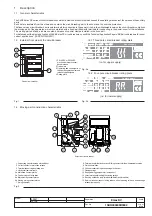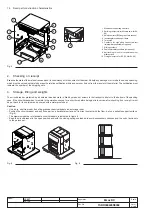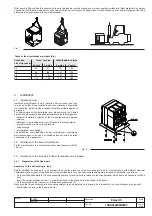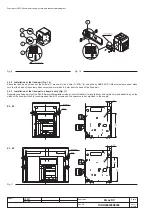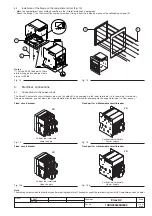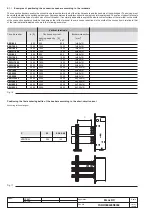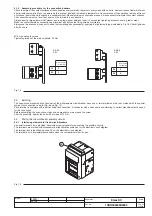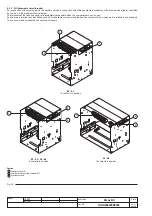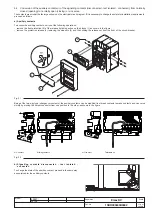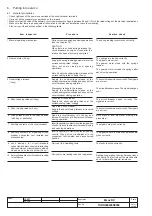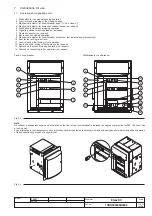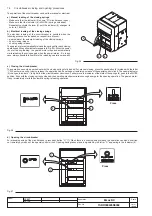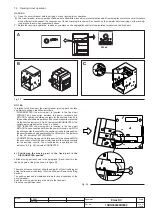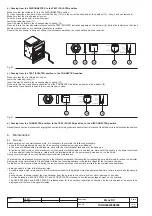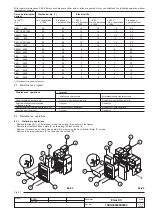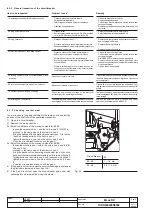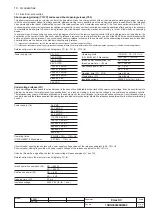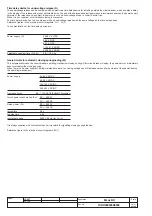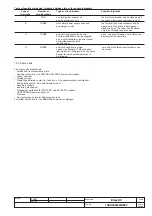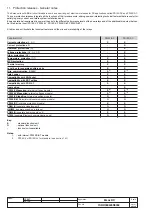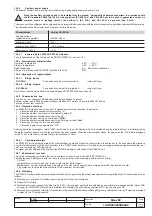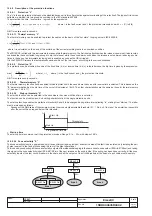
L3447
Emax DC
18/108
L3728
Doc. No.
Model
Apparatus
Scale
Page No.
1SDH000635R0002
12
14
10
9
11
10
9
11
b) Passing from the DISCONNECTED to the TEST ISOLATED position
Make sure that the indicator (9) is in the DISCONNECTED position.
For the connection procedure, make sure that the key (12) is in the correct position and/or the padlock (14), if any, has been removed.
Make sure that the circuit-breaker is open.
Push the moving part right into the fixed part.
Lower the releasing lever (11).
Insert the crank handle in the corresponding coupling (10).
Proceed to turn the crank handle clockwise until the TEST ISOLATED indication appears on the indicator (9). During the initial turns, the crank
handle must oppose no any particular resistance to rotation.
Should it be necessary to carry out offline circuit-breaker operations, the crank handle must be removed.
Fig. 30
Fig. 31
c) Passing from the TEST ISOLATED position to the CONNECTED position
Make sure that the circuit-breaker is open.
Lower the releasing lever (11).
Insert the crank handle in the corresponding coupling (10).
Proceed to turn the crank handle clockwise until the CONNECTED indication appears on the indicator (9).
Remove the crank handle to enable the circuit-breaker to close.
d) Passing from the CONNECTED position, to the TEST ISOLATED position, to the DISCONNECTED position
Repeat the connection procedures changing the direction for turning the crank handle to anti-clockwise. Open the door in the disconnected position.
8.
Maintenance
8.1 Warning
Before carrying out any maintenance work, it is necessary to complete the following procedure:
– open the circuit-breaker and check that the operating mechanism springs are unloaded
– in the case of withdrawable circuit-breakers, work with the circuit-breaker racked-out of the fixed part
– for action on fixed version circuit-breakers or on fixed parts of withdrawable circuit-breakers, disconnect the supply to the power circuit and
to the auxiliary circuits. Furthermore, visibly earth the terminals both on the power supply side and on the load side.
During normal service, the circuit-breakers require limited maintenance.
The table of the maintenance program is given in the following paragraph, indicating the corresponding periodic intervals for action. In particular,
with regard to the time intervals, it is advisable to follow the recommendations in the table, at least for the first year of service.
On the basis of the results obtained during the routine checks, establish the best time intervals for the maintenance operations.
It is also advisable to refer to the following rules:
– circuit-breakers which rarely operate, or which remain closed for long periods, must be operated from time to time to avoid any tendency to
stick
– during service, routinely inspect the circuit-breaker from the outside to check for any dust, dirt or damage of any kind.
For circuit-breakers with SACE PR122/DC and SACE PR123/DC releases, check the percentage of wear on the contacts.
The SACE PR122/DC and SACE PR123/DC releases allow for the number of operations performed by the circuit-breaker in service to be
displayed at all times on the special display.


